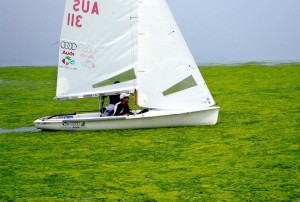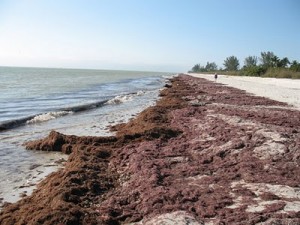- Algae can be defined as any living thing found in an aquatic environment that obtains energy from sunlight through photosynthesis. Algae forms the base of the aquatic food chain and produces 70 – 80% of Earth’s oxygen.
- Algae is found in both marine and freshwater environments, and some algae are found in moist terrestrial environments.
There are two broad categories of algae:
- Macroalgae: Large, multicellular plants. In the ocean, macroalgae is sometimes known as seaweed. In freshwater environments, we typically refer to it as algae.
- Microalgae: Single-celled photosynthetic organisms that cannot be seen without a microscope. These organisms belong to one of two Kingdoms: the Kingdom Plantae or the Kingdom Protista.
- Macroalgae are eukaryotic, photosynthesizing organisms that lack the specialized structures and reproductive mechanisms of true plants.
- Macroalgae do not have the leaves, stems, and roots of plants, but they do have functionally similar structures.
- Some macroalgae have pneumatocysts – gas-filled chambers that act as floats to help keep the algae near the sunlit surface of the water where it can photosynthesize.
There are three types of macroalgae:
- Red algae
- Green algae
- Brown algae
Each type is distinguished by the different photosynthetic pigments found in its cells.
- When water conditions are favorable, a population of algae in an aquatic system can increase rapidly, leading to an accumulation of algae. This is called an algal bloom.
- Although these blooms occur naturally in marine environments, nutrient enrichment caused by human activity can increase the population density and duration of a bloom.
- We will look at Red Drift Algae as an example of a Harmful Algal Bloom in Southwest Florida. Since Red Drift Algae is a macroalgae, it is also an example of a harmful macroalgal bloom.
Red Drift Algae
- Red Drift Algae is a feathery red algae that detaches from rocks and other hard structures in the Gulf of Mexico, eventually washing ashore.
- Red Drift algae is not toxic, but when present in large quantities, it outcompetes and smothers seagrasses and corals.
- When Red Drift Algae floats on the surface of the water, it results in low light availability to bottom communities like seagrass beds, reducing productivity and survival. The resulting habitat loss affects many sensitive species.
- As bacteria decompose red drift algae, they consume oxygen and release carbon dioxide. Large quantities of decaying algae therefore cause localized anoxic (lacking oxygen) conditions. Without oxygen, most marine creatures are unable to survive, and mass mortalitites of fish and shellfish are often observed during and after red drift algae blooms.
- Red Drift Algae may also become stuck in the gills of fish and crustaceans, which causes respiratory failure.
- Red Drift Algae is not toxic to humans, but when it decays on beaches it releases a strong odor that can trigger asthma attacks and allergies.
- Red Drift Algae can clog waterways and become lodged in boat propellers, causing expensive damage for boat owners to repair.
- The presence of stinky algae on the beach and the possibility for negative health impacts has a significant economic consequences on coastal communities. Most of Florida’s economy is based on tourism, and Harmful Macroalgal Blooms have had a massive effect on this industry. News of blooms can cause precipitous declines in the revenue generated by visitors to the state.
Review Questions
How are Harmful Macroalgal Blooms different from Harmful Microalgal Blooms?
What is a pneumatocyst? Why is it important for many types of macroalgae to drift near the surface?
List at least three problems associated with Red Drift Algae.
Glossary
Algae: Any living thing found in an aquatic environment that obtains energy from sunlight through photosynthesis.
Algal Bloom: When a population of algae in an aquatic system increases rapidly, leading to an accumulation of algae.
Anoxic: Lacking oxygen.
Eukaryotic: Having a nucleus
Harmful Algal Bloom (HAB): An algal bloom that has negative impacts.
Macroalgae: Large, multicellular marine plants.
Microalgae: Single-celled photosynthetic marine organisms that cannot be seen without a microscope.
Nutrient Enrichment: The addition of more nutrients to a body of water than its inhabitants require for normal life, growth, and reproduction.
Pigment: Substances produced by living organisms that have a color.
Pneumatocyst: A gas-filled chamber that helps keep algae near the sunlit surface of the water where it can photosynthesize.
Red Drift Algae: A type of algae that can lead to Harmful Macroalgal blooms commonly experienced in Southwest Florida.







